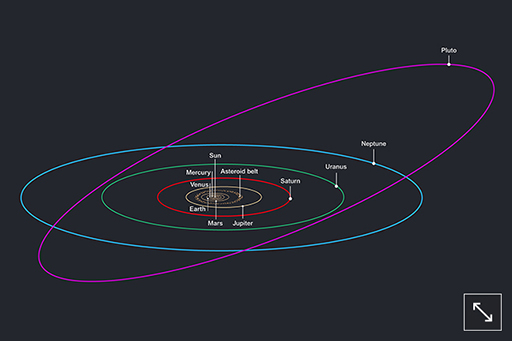3.4 Pluto’s eccentric orbit
Pluto’s orbit is so elliptical that it strays inside Neptune’s orbit for 20 years out of its 248-year circuit round the Sun. It last crossed inside Neptune’s orbit in 1979. Pluto orbits the Sun in an inclined orbital plane, and goes around the Sun twice for every three orbits that Neptune makes. The planets never actually pass through the same point in space at the same time, so they will never collide.
Suppose that a former Pluto-like object came close to Neptune, could Neptune have captured it? It sounds plausible, doesn’t it? But in fact it is very hard to do. In order to be gravitationally captured by a planet, a passing body must lose sufficient momentum to be slowed down to a speed less than that required to escape. However, if the visitor had a large moon of its own, so three bodies were involved rather than just two, one could have been captured while the other was spun away travelling a bit faster than when it arrived. This could work if Triton is in fact a body from a Pluto–Charon type binary system that strayed too close to Neptune.

